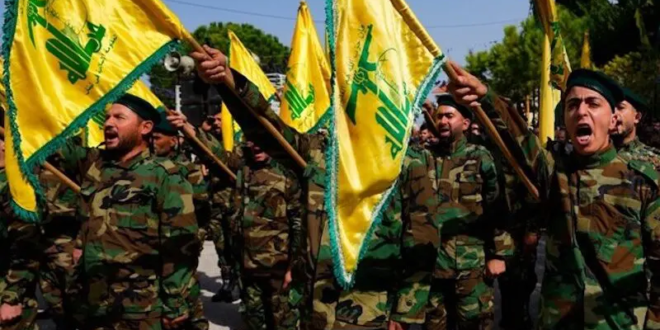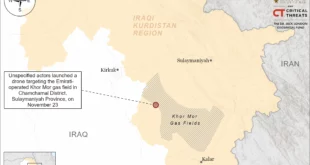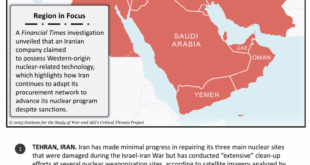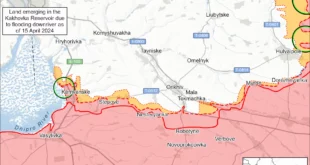The Iran-led “Axis of Resistance,” composed of a coalition of armed and political groups across Yemen, Lebanon, Syria, and Iraq, has been striving to play a significant role over the past year amid the ongoing conflict in Gaza. The military operations, tactics, and strategies of Hezbollah, a key player in this axis, are critical in shaping the future of the conflict in Lebanon and beyond.
Such strategies are currently dominated by one overriding imperative: the rapid restoration of command, control, and combat capabilities in Lebanon and Syria, given that Israel has successively eliminated key figures within Hezbollah over the past few weeks, notably the group’s longtime leader Hassan Nasrallah. Beyond the restoration of its core command structures, Hezbollah will be seeking to realize the following objectives over the short-term:
Deterring Israel from expanding its ground operations in Lebanon. Israel has shown a relentless will to escalate and expand its military operations, particularly in southern Lebanon and Syria, a region where Hezbollah has maintained a significant influence for decades. Despite the group’s recent setbacks, Hezbollah still views it as imperative to prevent Israel from launching a large-scale ground invasion in southern Lebanon. Such an operation would significantly shift the long-term geopolitics of the region and weaken Hezbollah’s strategic foothold. It would also afford Israel a chance to expand operations beyond Lebanon and target Iran-backed groups in Syria, Iraq, and possibly even Iran itself. As a result, one of the primary military objectives of Hezbollah and the wider Axis is to establish deterrence and demonstrate that any Israeli attempt to expand its operations will still be met with resistance.
Preparing for a prolonged conflict with Israel. Beyond immediate deterrence, it can be assumed that Hezbollah and other parts of the Axis of Resistance are actively preparing for a wider and more prolonged conflict with Israel. This preparation extends beyond short-term armed confrontations, incorporating a long-term strategy that acknowledges the possibility of prolonged hostilities. Hezbollah, with its decades-long experience fighting Israeli forces, understands the importance of preparing for a drawn-out confrontation, one that could involve urban warfare, asymmetric combat, leveraging missile capabilities, and protracted skirmishes along the border. The capacity for endurance in such a type of conflict is seen as crucial, and Hezbollah’s focus on maintaining combat readiness and a capacity for rapid flexibility in deployment remain key pillars of this strategic preparation.
Forcing the United States to withdraw from Syria. Another strategic objective is to pressure the United States to fully withdraw its forces from Syria—a goal shared by Russia and Iran, as well as extremist groups like Islamic State. In this respect, the US military presence in Syria, particularly in strategic geographical locations, remains a source of contention for anti-US regional players.
Hezbollah’s Current Combat Operations
Following the elimination of most of Hezbollah’s leadership and senior commanders from the elite Radwan Forceduring recent strikes in Beirut, Hezbollah has escalated its operations, likely in an attempt to prove that it still has the capacity to do so. In response to mounting Israeli military operations in southern Lebanon, Hezbollah has launched a series of precision attacks using anti-tank guided missiles (ATGMs), with one such attack targeting Israeli air defense systems in Ramot Naftali in northern Israel. The attacks indicate an enduring capacity on the part of Hezbollah to strike with precision from significant distances, an important aspect of the group’s asymmetric warfare capabilities. Furthermore, it demonstrates that Hezbollah’s missile capabilities can still at times circumvent Israel’s Iron Dome defenses.
In addition to ATGM attacks, Hezbollah has also utilized drone warfare to target Israeli positions. Such has been evident in the combined missile and drone attacks on Israeli military installations in Haifa. The Haifa attacks underscore Hezbollah’s growing dependence on drones in their overall combat strategy, a tactic also employed by the Houthis in Yemen in most of their maritime attacks. As in other battlefields around the world, drones remain a cost-effective way to perform precision strikes from a distance.
Hezbollah maintains a capacity for rocket strikes as well, recently launching a barrage of rockets against Israeli forces positioned near Yaroun and on the outskirts of Blida. Such attacks aim not only to inflict damage on Israeli forces, but also prevent them from gaining control of key areas in southern Lebanon, thereby halting Israel’s military progress in southern Lebanon. Fighting around Blida is particularly significant, as Israel has yet to succeed in cutting the town’s connection to nearby villages, suggesting an ability on the part of Hezbollah to maintain pressure on these positions.
Hezbollah’s rocket attacks offer several tactical and ideological benefits. Firstly, they disrupt Israeli ground operations and force the IDF to remain in a defensive posture. Secondly, they showcase Hezbollah’s ongoing capacity to maintain high-intensity attacks, thereby reinforcing the message that any Israeli incursion into southern Lebanon will encounter resolute resistance despite the recent removal of the group’s top leadership.
Drone warfare and rocket attacks reflect a core component of Hezbollah’s military strategy: an emphasis on indirect and remote combat. Rather than engaging Israeli forces in direct confrontations, Hezbollah focuses on long-range attacks that minimize the exposure of its fighters to enemy fire. In doing so, Hezbollah is able to inflict significant damage on Israeli forces while maintaining a low casualty rate among its own fighters on the ground. The strategy evolved from Hezbollah’s experience in previous conflicts, where direct engagements with a technologically superior Israeli military resulted in heavy losses.
Looking ahead, the group’s wider strategy will be to prolong the conflict and maximize Israeli losses. Despite Israel’s advanced military capabilities, Hezbollah is fully aware that Israeli forces, if left unchecked, will attempt to push deeper into Lebanon, thus becoming vulnerable to a war of attrition that Hezbollah appears well prepared to engage in, particularly in light of the possibility of further reinforcements from other segments of Iran’s Axis of Resistance, such as from Iraq and Syria. Under this scenario, it is unlikely that Hezbollah’s forces will be able to defend individual villages or positions in the south at all costs. Instead, and much like in the the past, the group will adopt a more flexible defense strategy, targeting advancing Israeli forces from a distance rather than attempting to hold ground.
 Eurasia Press & News
Eurasia Press & News



